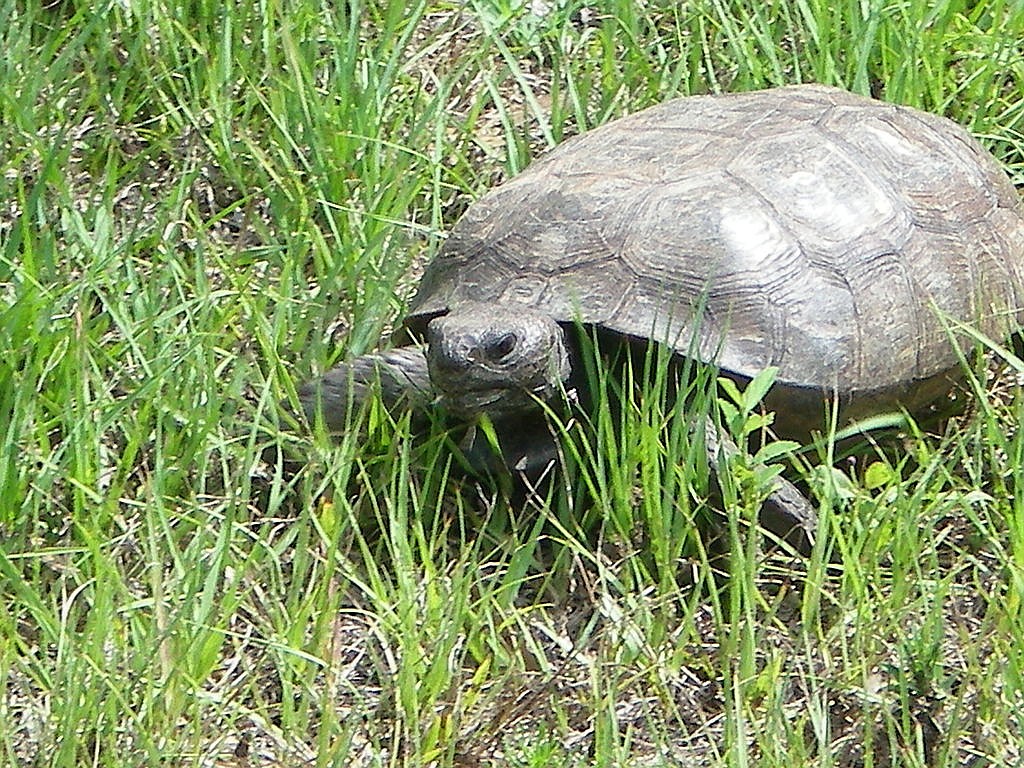- January 14, 2025
-
-
Loading

Loading

State wildlife officials defended an emergency order that expands how far threatened gopher tortoises can be relocated as booming development continues in Florida.
But members of the Florida Fish and Wildlife Conservation Commission suggested lawmakers might need to be asked to beef up fines for people who cover up gopher tortoise nests or try to move the reptiles without permission.
Commissioners, meeting Wednesday, Dec. 15, at The Henderson resort in Destin, directed staff members to review the various penalties, which would need legislative approval to change.
“A bad actor can say, ‘Hey, the cost of doing business you know, it's gonna be blah, blah blah,' right, and then pay the fine," commission Chairman Rodney Barreto said. “I think we should take a look at that.”
“It's got to sting,” added Commissioner Steven Hudson.
Otherwise, commissioners praised a program created in 2008 that allows developers to pay for gopher tortoises to be moved to reserved land. They also backed a 90-day executive order issued Nov. 18 that allows “recipient” sites to be more than 100 miles from where the creatures initially dug their homes. The executive order is related to a surge in construction.
“Maybe we're not doing a good enough job of telling that story,” Commissioner Gary Lester said of the relocation program. “It really has been an incredible success. And it's a great example of how the public and private can work together, how we can enlist private landowners in helping protect this species. … It is undergoing what I think someone referred to as a temporary squeeze. And I think this just shows the executive order shows some common-sense flexibility in keeping a really good program working.”
The 100-mile limit was designed to prevent tortoises from being shifted into different climates, and the change in the executive order has drawn concerns from conservationists.
Marcus Cantos, owner of the Turtle Source in Fort Myers, told commissioners “development needs to fund a better solution.”
“It's well known that most of the models and statistics of relocation success are not accurate, and now moving them over 100 miles only worsens that situation,” Cantos said.
Elise Bennett, senior attorney for the Center for Biological Diversity, pointed to “reckless development that's caused the shortage of recipient sites.”
“You should hold firm on your established protections for tortoises and do more,” Bennett said.
Bennett suggested increasing oversight and monitoring of recipient sites, encouraging staff members to continue establishing more recipient sites, increasing fines and studying how much habitat tortoises need long term.
“When the availability of adequate habitat becomes a problem for the species, the response should never be to lessen the protections that already exist, even on a case-by-case basis,” Bennett said.
With gopher tortoises listed as threatened, landowners are required to obtain permits from the commission before tortoises are captured and relocated. Tortoises and their burrows, which provide shelter for at least 360 other animal species, are protected under state law.
It is illegal to harm, kill, harass, feed or disrupt the behavior of gopher tortoises. Developing land within protected areas of gopher tortoises or their burrows could result in a third-degree felony charge, which includes potential fines of $5,000.
“The EO (executive order) does not reverse any existing protections,” said Jennifer Goff, director of the commission’s Division of Habitat and Species Conservation. “All impacts to tortoises, all impacts to their burrows, all handling, relocating of tortoises must be done under the existing permitting system.”
Goff said the gopher-tortoise program is under pressure but has been able to keep up as development has steadily increased.
“We are continuing to permit new (recipient) sites,” Goff said. “We do have several that are in the queue now. And we expect to bring on about another 2,500 spaces very soon. We have about 60 landowners, actually a little higher than that, that are in the pre-application process now, which is the process that landowners enter into when they're interested in becoming recipient sites.”
More than 2,500 permits have been issued this year for more than 17,000 tortoises to be relocated, with costs of moving tortoises increasing from between $1,000 and $2,000 per tortoise to $6,000. Each relocation site must be on land set aside from future development and for a maximum of two tortoises per acre.
In 2020, more than 10,000 tortoises were relocated, and the number of permits has steadily increased.